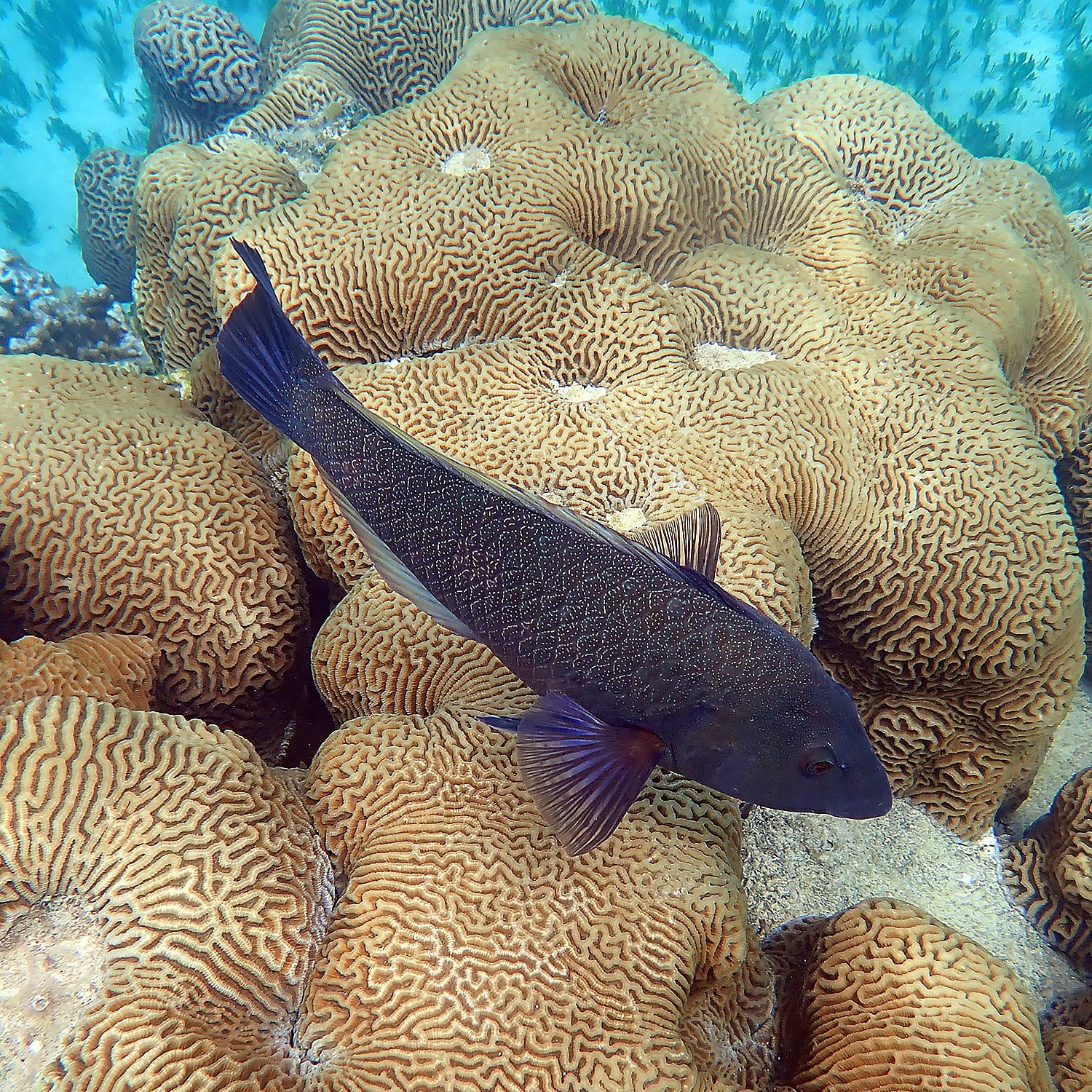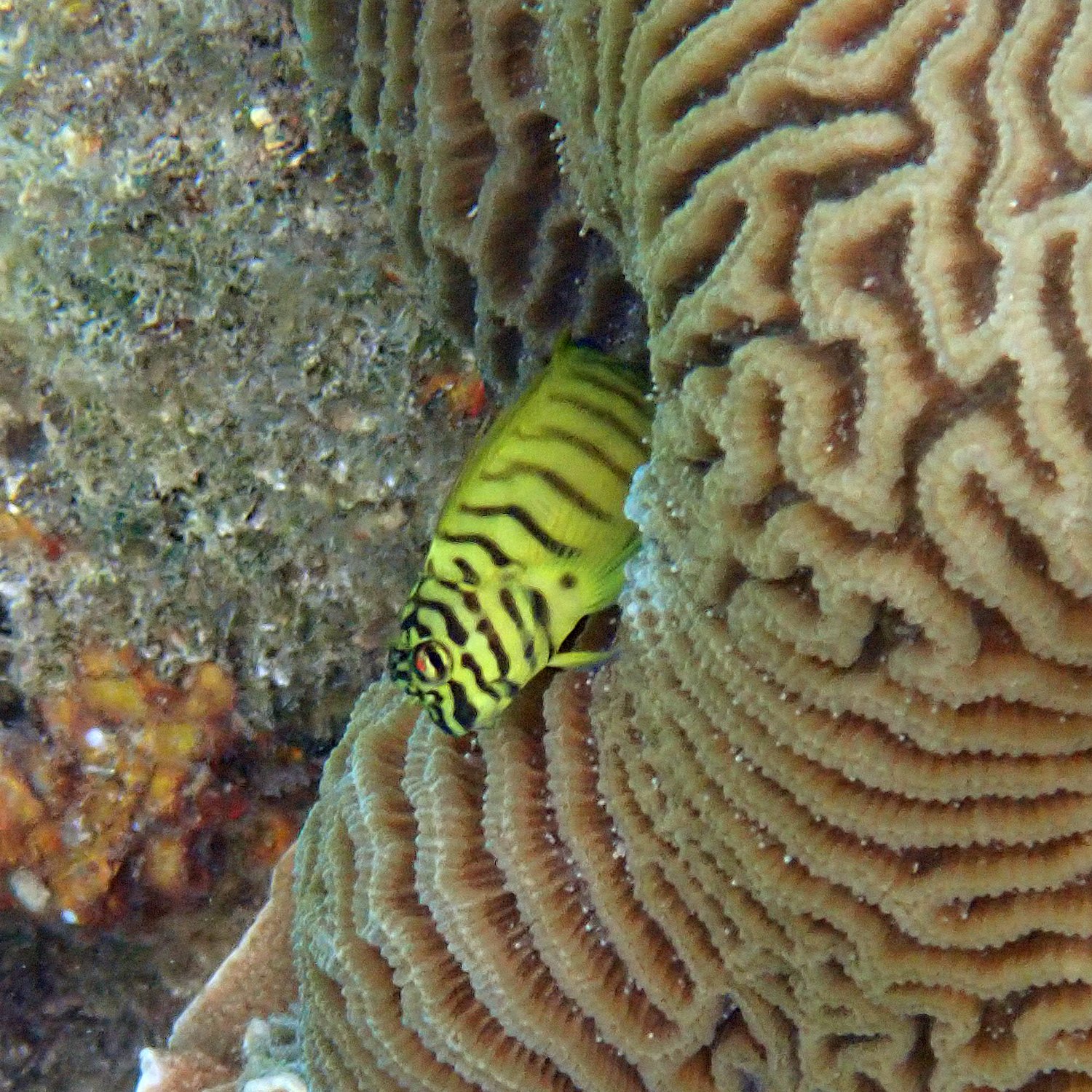Paragoniastrea australensis and the micro-reef it holds together
Just off the shore in Norfolk Island’s Emily Bay sits a coral bommie that many locals have known since childhood. It’s a Paragoniastrea australensis, a slow-growing ‘brain’ coral that’s stood firm through decades of storms, tides, and the gaze of passing swimmers and snorkellers. No one alive probably knows how old this coral really is. While putting together this blogpost, and just for fun, I looked at colonial artist George Raper’s early map of Norfolk Island from around 1790 (the island was first settled by the British in 1788). Is that the same coral marked there in Emily Bay (see the cropped version)? That’s a bit of a stretch, so probably not, but it’s in about the right place.
One thing is for sure, though, for many years, this solitary bommie has been a sentinel of the lagoon – a familiar landmark and a microcosm of reef life in motion and for that alone I thought it deserved to be celebrated on this blog.
Above: Map of Norfolk Island. c. 1790. Raper, George & Raper, George & Bradley, William. (1790). Norfolk Island Retrieved July 20, 2025, from http://nla.gov.au/nla.obj-232281089
I remember this brain coral from when I used to snorkel in Emily Bay back in the 1990s, and it features in a report, Emily Bay and Slaughter Bay, Norfolk Island: Resources and options for management, from 1988, authored by Dr Angela Ivanovici. A grainy photograph, credited to Margaret Christian, shows the coral as it was then: rounded, solid, unmistakably recognisable (see the photo gallery at the bottom of this article). Underwater photography was rare at the time – the gear was expensive, and marine science generally, let alone on the island, was still in its infancy, so these early records are precious.
I often like to visit it and often, when I am out in the early morning, it turns on a bit of a show, putting out long sweeper tentacles to aggressively claim its place from other surrounding corals. I’ve included links to some further reading at the bottom of this post.
Raper’s cropped map showing Emily Bay. Is that the same bommie shown in the red circle? Unlikely … but still it’s in about the right spot!
When I compared the 1988 photo with my own recent images – taken over the past few years as part of my long-term documentation of reef change – I was struck by both continuity and loss. The bommie is still there, but it’s changed. One or two large sections have broken off, likely the result of big seas caused by a passing storm. But its overall form remains, and with it, its role as a quiet keystone in this patch of reef.
A miniature ecosystem
A coral bommie – essentially a large, isolated coral outcrop – functions like a self-contained reef. Its three-dimensional structure provides shelter, food, and breeding grounds for a diverse range of marine life. In Emily Bay, this particular bommie draws in everything from a whole variety of wrasses and damselfish to goatfish, parrotfish, blennies, sea urchins, sea anemones, and nudibranchs. Crannies and overhangs create perfect hideouts from predators and currents, while the surface supports algae that sustains tiny invertebrates and the fish that feed on them.
The bommie becomes a magnet for biodiversity, offering both refuge and resources in a relatively small footprint. I’ve included some photos of regular visitors and residents, below. Some appear seasonally, while others are permanent fixtures. The structure also acts as a nursery ground: juvenile fish often gather here to feed and shelter.
Ecological importance – and local meaning
Sweeper tentacles are used to assert the coral’s space on the reef
Here on Norfolk Island, we have few long-term data records for our coral reefs. But this bommie – captured on film nearly four decades ago and still present today – gives us a rare chance to connect past and present. It reminds us that reef history isn’t just ecological – it’s personal. People remember this coral. They grew up with it. It belongs to our collective memory as much as it does to the lagoon floor.
As citizen scientists and reef watchers, we now have the tools to preserve these stories. Every photograph, observation, and memory helps build the record that future generations will need. This coral bommie – weathered but standing – shows us how much a single coral can witness, and how much it still has to teach.





















